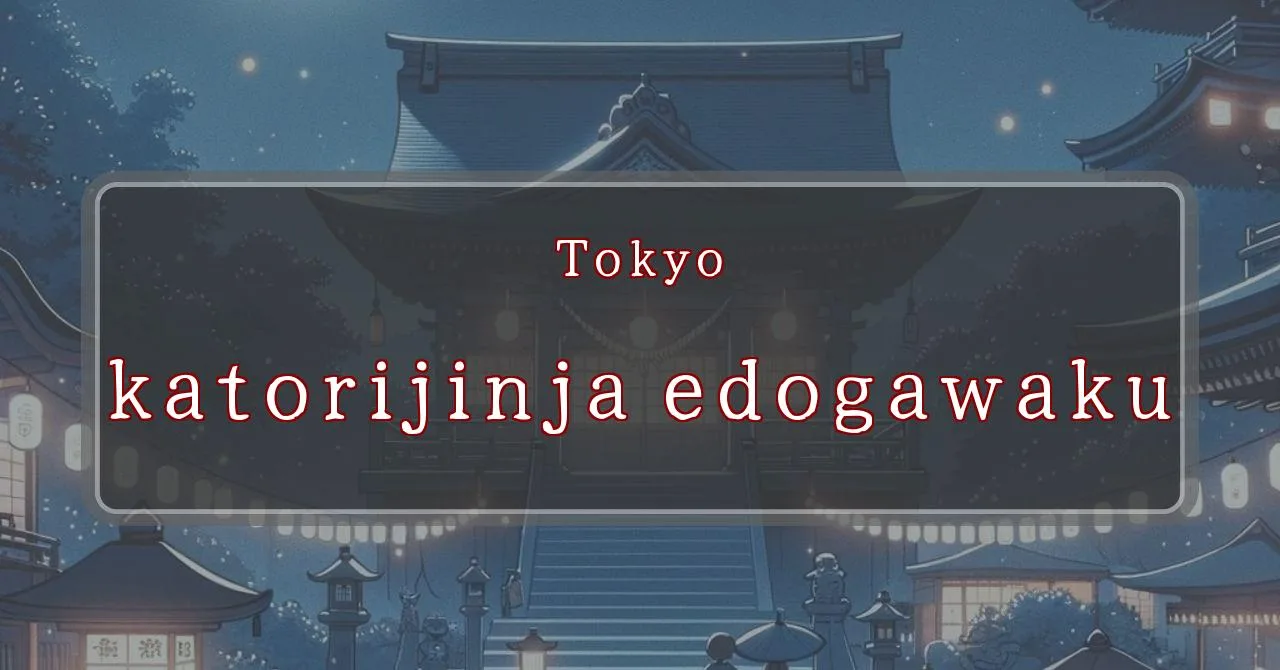Enchanting lights illuminate the night
Basic Information
Katori Shrine is a Shinto shrine located in Edogawa-ku, Tokyo, Japan. It is dedicated to the deity Futsunushi-no-Mikoto, the god of war and victory.
- Address: 4-5-23 Chuo, Edogawa-ku, Tokyo 132-0021
- Phone Number: 03-3655-8980
- Access: 7-minute walk from JR Shinkoiwa Station (South Exit)
- Festival Days: August 21, 2024 (Reiwa 6)
Main Events and Attractions of the Festival
The Katori Shrine Festival is an annual event that takes place on August 21st. It is a Shinto festival that celebrates the shrine’s deity, Futsunushi-no-Mikoto, the god of war and victory.
Mikoshi Procession
The highlight of the festival is the mikoshi procession. A mikoshi is a portable shrine that is carried through the streets by a group of people. The Katori Shrine mikoshi is a large and elaborate structure that is decorated with colorful tapestries and carvings. It is carried by a team of over 100 people, and it is a sight to behold as it makes its way through the streets.
Kagura Performance
Another popular attraction at the festival is the kagura performance. Kagura is a traditional Japanese dance that is performed to Shinto music. The dances are often very elaborate and colorful, and they tell stories from Japanese mythology.
Food Stalls
There are also a number of food stalls at the festival, where visitors can enjoy a variety of Japanese dishes. Some of the most popular foods include yakitori (grilled chicken skewers), takoyaki (octopus balls), and taiyaki (fish-shaped cakes filled with sweet bean paste).
Fireworks Display
The festival concludes with a fireworks display. The fireworks are launched from a barge in the nearby Edogawa River, and they light up the night sky with their brilliant colors.
Blessings and Deities
Katori Shrine is dedicated to the deity Futsunushi-no-Mikoto, the god of war and victory. He is said to be the son of Takemikazuchi-no-Mikoto, the god of thunder and lightning, and Ōyamatsumi-no-Mikoto, the god of mountains. Futsunushi-no-Mikoto is also known as the god of martial arts and is revered by samurai and other warriors.
- Deity: Futsunushi-no-Mikoto
- Blessings: Victory, martial arts, war
Origin and History
The origins of Katori Shrine are unclear, but it is believed to have been founded in the 9th century. The shrine was originally located in Katori, Chiba Prefecture, but it was moved to its current location in Edogawa-ku, Tokyo in 1657. The shrine was destroyed by fire in 1868, but it was rebuilt in 1871.
- Founded: 9th century
- Original location: Katori, Chiba Prefecture
- Current location: Edogawa-ku, Tokyo
- Rebuilt: 1871
Tips and Notes for Visitors
Here are some tips and notes for visitors to Katori Shrine:
- The shrine is open daily from 9:00 AM to 5:00 PM.
- Admission is free.
- The festival is held on August 21st each year.
- The shrine is a popular spot for weddings and other ceremonies.
- There is a small museum on the shrine grounds that displays artifacts related to the shrine’s history.
Parking Information
There is a parking lot available for visitors to Katori Shrine. The parking lot is located a short walk from the shrine.
- Location: A short walk from the shrine
- Fees: Free
- Hours: 9:00 AM to 5:00 PM
Popular Stalls and Food Carts in Recent Years
| Type of Stall | Description |
|---|---|
| Takoyaki | A staple at Japanese festivals. Characterized by a crispy outside and a creamy inside. |
| Jaga Butter | A simple yet popular snack of hot potatoes lavishly topped with melted butter. |
| Baby Castella | Small castella cakes, sweet and fluffy treats enjoyed by children and adults alike. |
| Grilled Ayu with Salt | Fresh ayu fish grilled whole with salt, a savory taste of Japanese summer. |
| Shaapin | A unique gourmet item influenced by foreign cuisine, with a chewy skin wrapping the filling. |
| Okonomiyaki | A Japanese grilled dish where you often choose your own ingredients for a personalized flavor. |
| Cotton Candy | A fluffy, sweet snack that’s extremely popular with children. |
| Chocolate Banana | A banana coated in chocolate, a fun and visually appealing dessert. |
| Kushiyaki | Various types of ingredients skewered and grilled, an easy-to-enjoy snack. |
| Yakisoba | Fried noodles mixed with a special sauce, a fast food favorite in Japan. |



